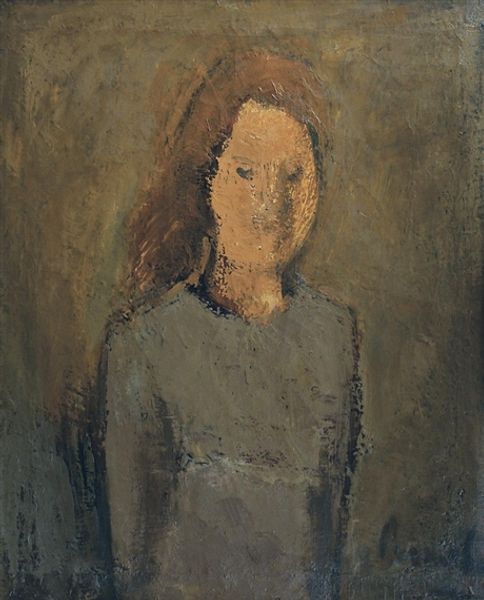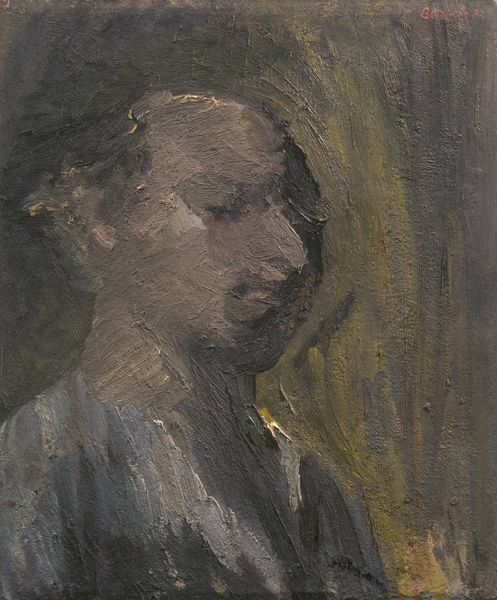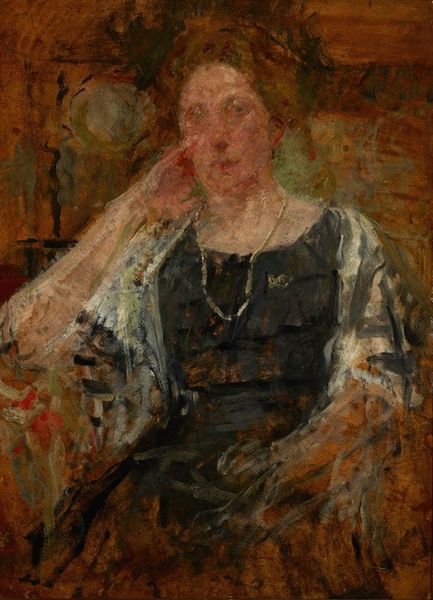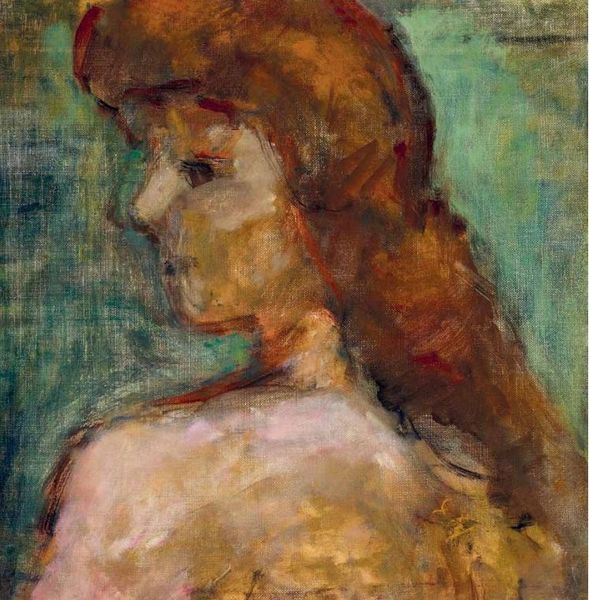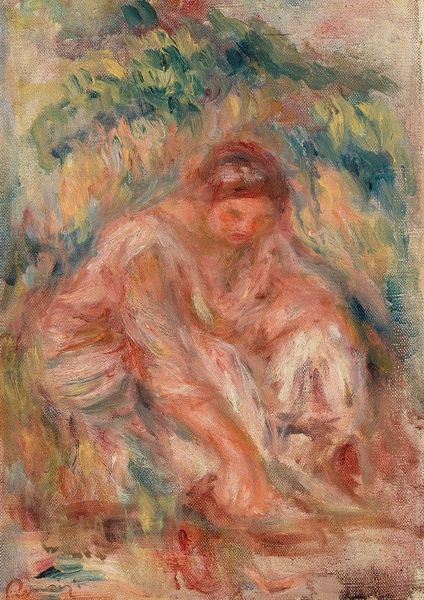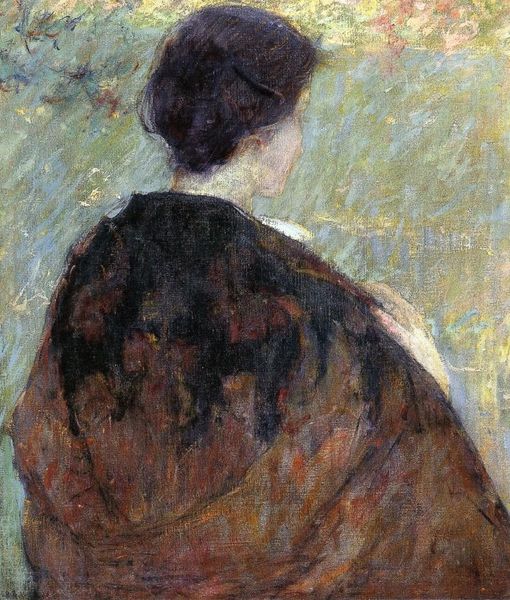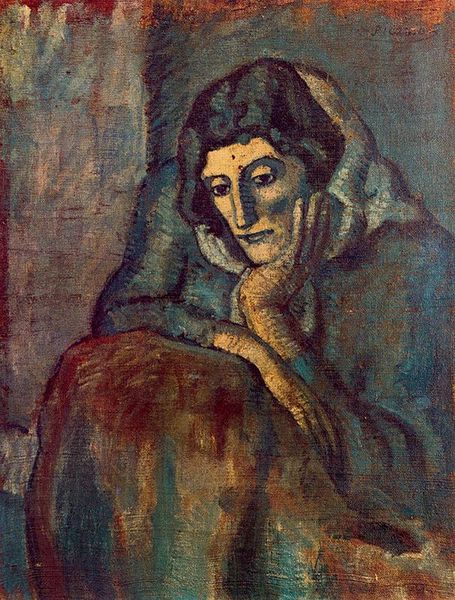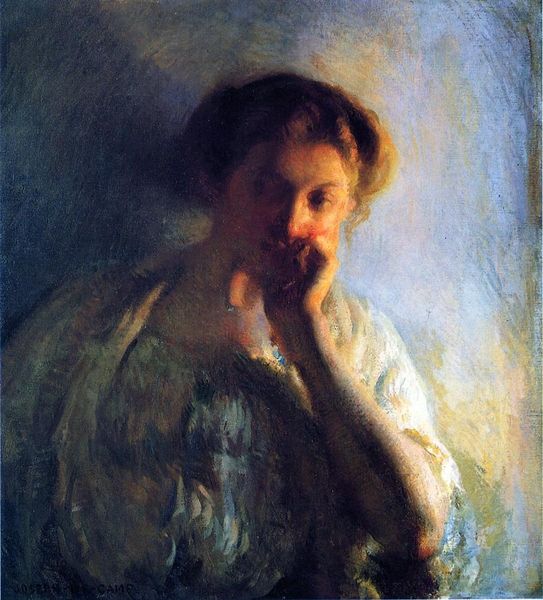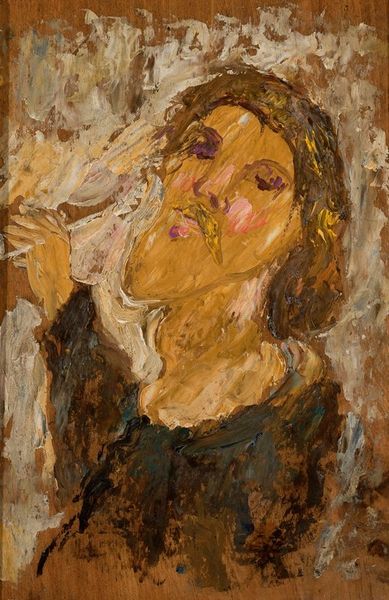
Copyright: Public domain
Editor: Here we have Jean-Baptiste Carpeaux's oil on canvas, *Portrait De La Duchesse De Cadore*, painted in 1861. I'm immediately struck by how the dark background makes the figure seem almost to emerge from the shadows, and the visible brushstrokes give it a sense of immediacy. How do you interpret this work? Curator: It’s fascinating how Carpeaux uses the portrait to navigate the changing social landscape of the Second Empire. It’s not just a likeness; it's a statement about the role of the aristocracy during a time of significant social and political upheaval. Consider the brushwork you mentioned – rough, unfinished in places. Does that remind you of anyone? Editor: Perhaps hinting at the dynamism of Romanticism and the portraits by Delacroix? Curator: Precisely. But look closely – what is "romantic" about her face? Carpeaux acknowledges those painting styles while situating the work, and the Duchess, within a very particular visual vocabulary. It is very much meant to show its access, and distance, to older and more traditionally refined society portraits. Think about the Duchesse's placement within society. Aristocracy still possessed symbolic power, but what about *real* power? Is she in power, in your eyes? Editor: She looks contemplative and thoughtful; perhaps not overtly powerful in the domineering sense, but with a quiet strength born of her position and background. Curator: That's a nuanced way to view it. By portraying her with this internal focus and highlighting the tensions of Romanticism, Carpeaux provides a glimpse into the shifting dynamics of power and influence during that time. Do you find that she looks like any figureheads of society from that time, say, within popular media? How do you see the 'popular' imagination affecting such portraiture work like this? Editor: I see what you mean! It's a potent reminder that portraits are never neutral records. It really encourages us to think critically about art’s relationship with the society around it. Curator: Agreed. And that's the beauty of examining art through a historical lens. It reveals how artists like Carpeaux actively engaged with, and reflected on, their ever-changing world.
Comments
No comments
Be the first to comment and join the conversation on the ultimate creative platform.
